
“Confit” comes from the French word confire, meaning “to preserve.” Slow-cooking garlic in oil creates a rich yet mellow flavor. For this recipe, you’ll need to first prepare the garlic confit with lemon and thyme, and then add the chicken to cook in the confit.
Garlic confit can be used as a condiment, so I always keep a jar of it in my refrigerator. Once you have the garlic confit on hand, you can have a delicious meal on the table in a fraction of the time.–Kim Kushner
Honey Glazed Chicken FAQs
As the author explains above, in French, the word “confit” literally means “to preserve.” It’s an age-old tradition in which home cooks and chefs season and slowly cook an ingredient in liquid, like oil or fat. Many things can be confited, the most famous, perhaps is duck confit.
Wildflower honey is considered to be the best type of honey for cooking and baking due to its antioxidant properties and the layers of flavor it can add to a dish. The honey flavor in this particular dish is not so pronounced that you must seek out a specific honey. Clover, orange blossom, or whatever type you have in your pantry will do nicely here.
About four large bone-in breasts will equal one whole chicken. You could also substitute all thighs–in which case you would need approximately eight. We don’t recommend using boneless meat for this recipe as the bone-in version will be far more juicy and flavorful.
Serve this with something to sop up all those wonderful sweet, tangy, garlicky juices, whether it be fluffy lemony mashed potatoes or crusty bread. A simple salad or some roasted carrots will also do nicely here.
The garlic confit can be prepared and stored in the refrigerator for up to 2 weeks before using. The garlic confit and chicken can be assembled in the baking dish for up to 24 hours before baking. Store the dish in the refrigerator and bring it to room temperature before cooking.
☞ Like roast chicken recipes? Try these:
- Maple Roast Chicken
- Creamy French Chicken Stew
- Sheet Pan Chicken with Apples, Bacon, and Brussels Sprouts

Honey Glazed Chicken with Garlic Confit
Ingredients
For the garlic confit
- 20 cloves garlic, peeled
- 1 lemon, very thinly sliced and seeds removed
- 5 to 6 sprigs fresh thyme
- 1/2 cup extra-virgin olive oil
For the honey glazed chicken
- One (3-pound) whole chicken, cut into 8 pieces, skin on and bone in, trimmed of excess skin and fat
- Kosher salt and freshly ground black pepper
- 1/4 cup balsamic vinegar
- 4 teaspoons honey
Instructions
Make the garlic confit
- Preheat oven to 325ºF (160°C).
- In a baking dish large enough to hold the chicken in a single layer, combine the garlic, lemon, and thyme. Pour in the olive oil and bake, uncovered, until the garlic has softened, about 35 minutes. Set aside for 10 minutes to cool slightly.
Make the honey glazed chicken
- Increase the oven temperature to 375ºF (190°C).
- Generously season the chicken with salt and pepper. Using your hands, rub the vinegar and honey over the chicken.
- Using a wooden spoon, move the garlic mixture to the sides of the baking dish to create a space in the center. Add the chicken to the center of the dish and spoon the garlic mixture on top.
- Cover the baking dish with an ovenproof lid or aluminum foil. Bake for 40 minutes. Uncover the dish and bake until the chicken is cooked through to an internal temperature of 165°F (74°C), 10 to 20 minutes more.
- Discard thyme and serve.
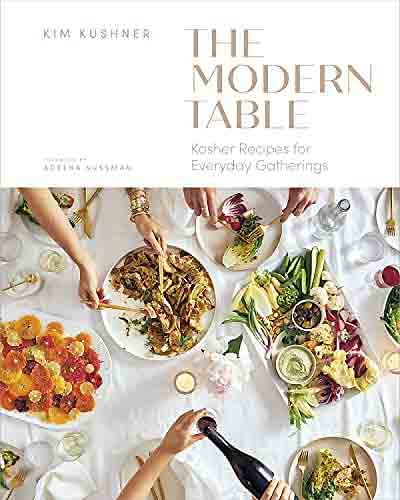
Nutrition
Nutrition information is automatically calculated, so should only be used as an approximation.
Recipe Testers’ Reviews
I thought this honey-glazed chicken was delicious in an understated kind of way–no one particular flavor bangs you over the head, but the dish as a whole is well-balanced. I think this dish could dress up or down pretty easily, depending on your needs.
I served the chicken alongside roasted leeks and carrots with basmati rice.
The comforting aroma of garlic, lemon, and chicken filled the house as this honey roast chicken dish baked. I loved how tender the chicken turned out, and the garlic-lemon sauce was quite flavorful.
I used bone-in, skin-on chicken breasts because that is what I had in my freezer and bought peeled garlic to make this recipe even easier. I did crank up the heat to 400ºF for the last 10 minutes to get the skin a bit browner.
I made buttered egg noodles to serve as a base for the garlic and lemon sauce which I passed on the side as well; the lemon slices tasted delicious after being slow cooked like this, and I wished there were more of them. I made steamed asparagus and roasted carrots which were fantastic accompaniments to this dish along with a glass of Côte du Rhône.
This honey roasted chicken proved to be a quick, easy, healthy, and delicious weeknight dinner! We all loved the combination of the garlic and lemon, and my kids were shocked that they could entire whole cloves without feeling the heat! I served it with steamed broccoli and Israeli couscous.
Make this recipe for the honey glazed chicken, keep it for the confit. While there’s nothing groundbreaking about this recipe (and in fact, it’s reminiscent of the classic chicken with 40 cloves of garlic, it’s nonetheless delicious, comforting, and very, very simple to prepare.
Heed the author’s advice and buy the pre-peeled garlic! The confit is indeed a condiment worth its weight in gold, bringing endless opportunity for use on roasted vegetables, toasted breads, pasta, and stir-fries.
I was intrigued by this recipe because I love duck confit. With that in mind, I used chicken legs and thighs instead of a whole chicken. I wanted to maximize the rich flavor of the dark meat. The directions in the recipe are simple and easy to follow.
The twenty garlic cloves did not overpower the recipe. The chicken was succulent and flavorful. It was even better when served as leftovers two days later.
I served the dish with roast potatoes and carrots and a bitter greens salad. The flavor of the chicken will whisk you off to some quiet bistro in rural France.
This is a tasty and easy roasted chicken dinner with plenty of nuanced flavors. The garlic confit is best left under the chicken as it bakes so it doesn’t burn, and the chicken gets a nice crispy skin without using a lid or foil on top. I served with potato boulangere and garlic green beans this was a delicious Sunday supper.
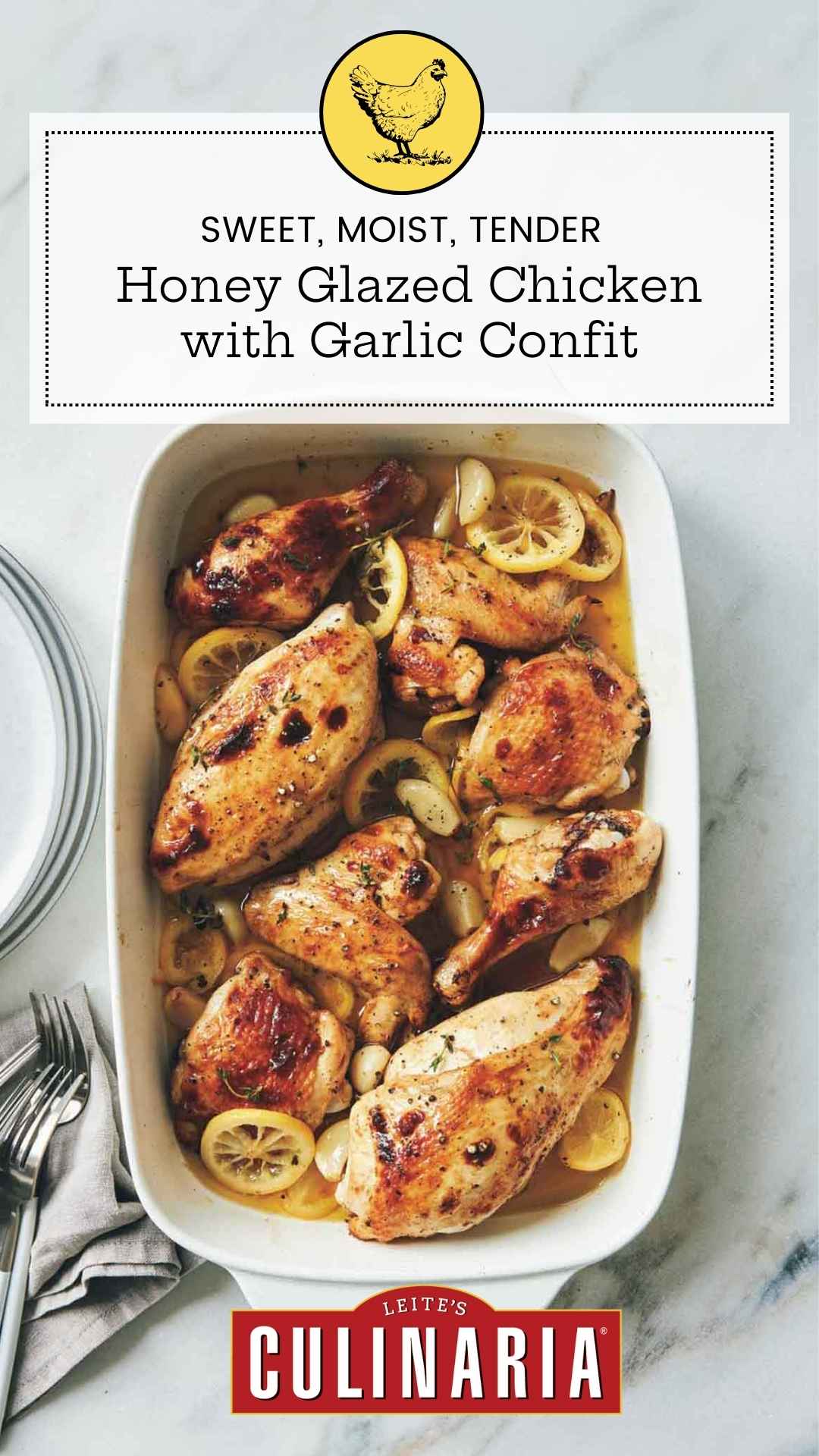
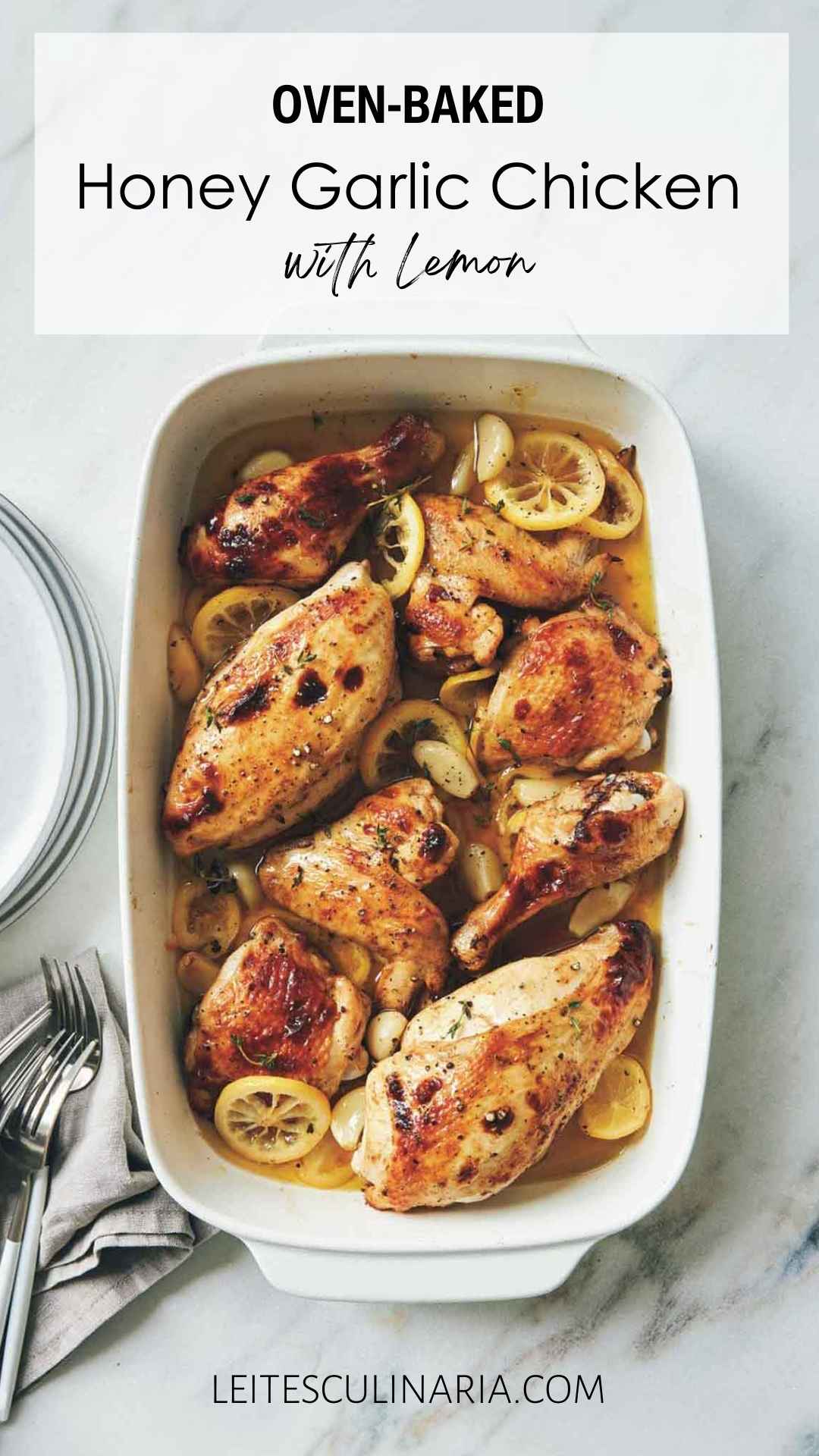

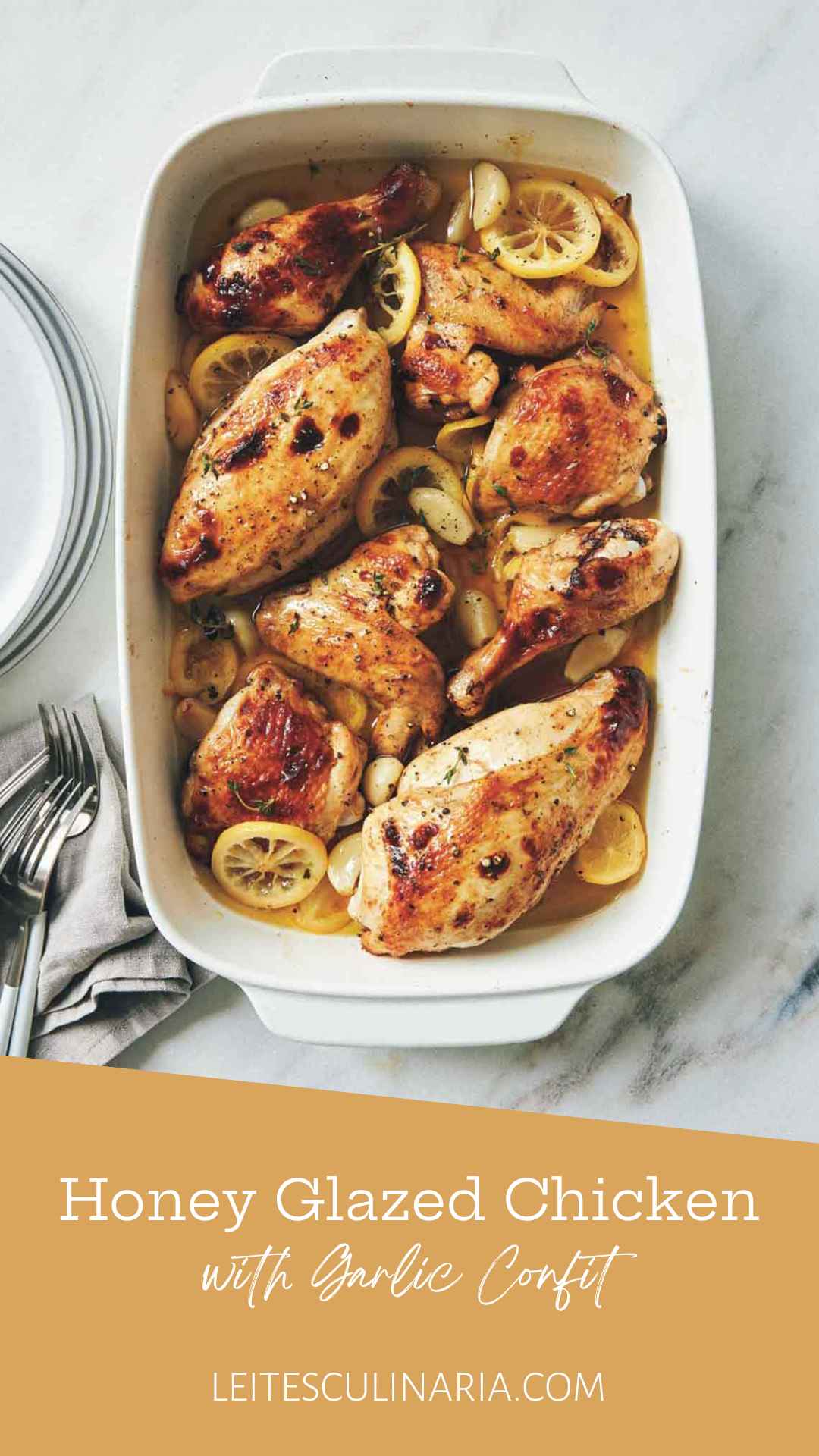
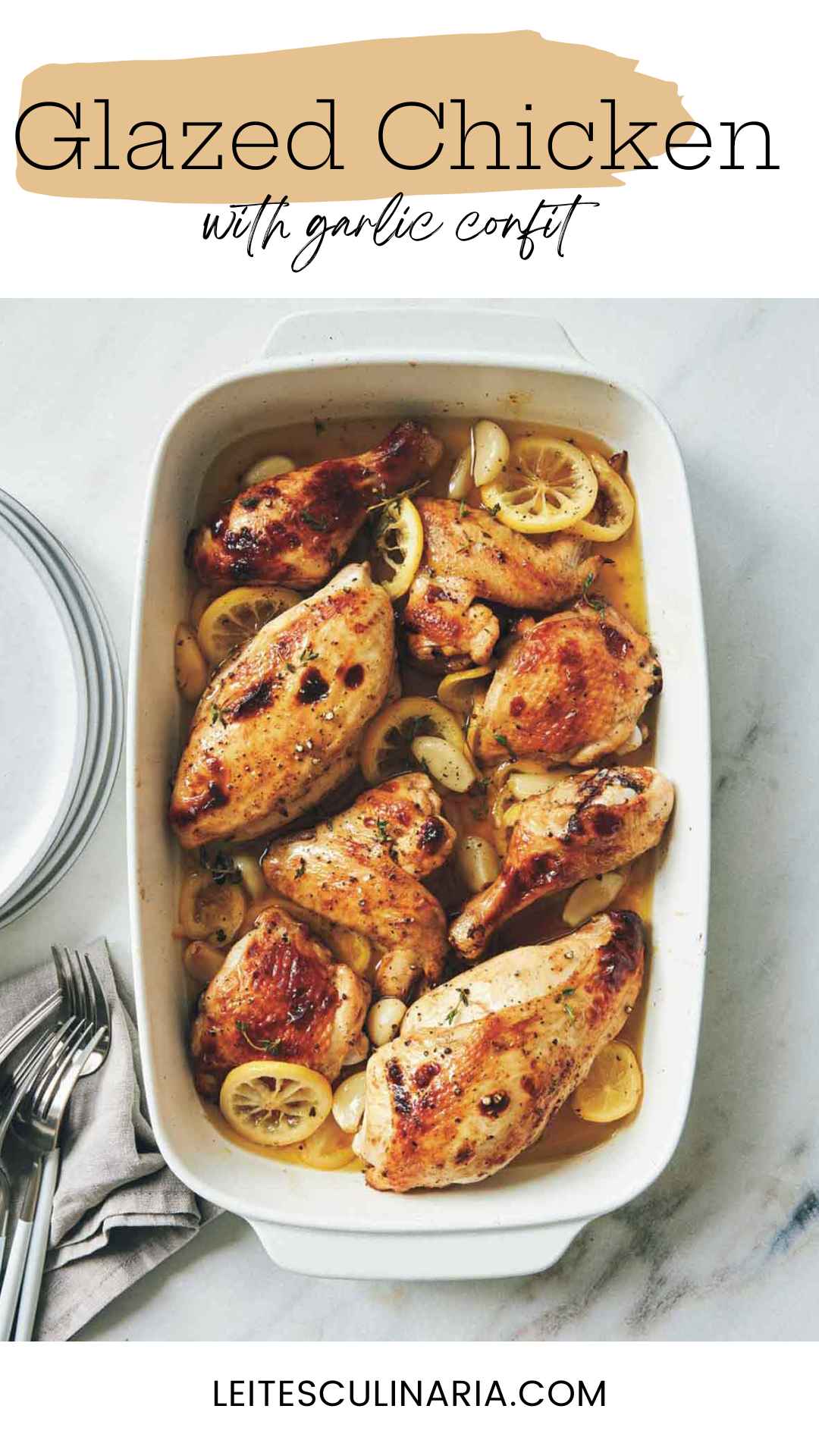
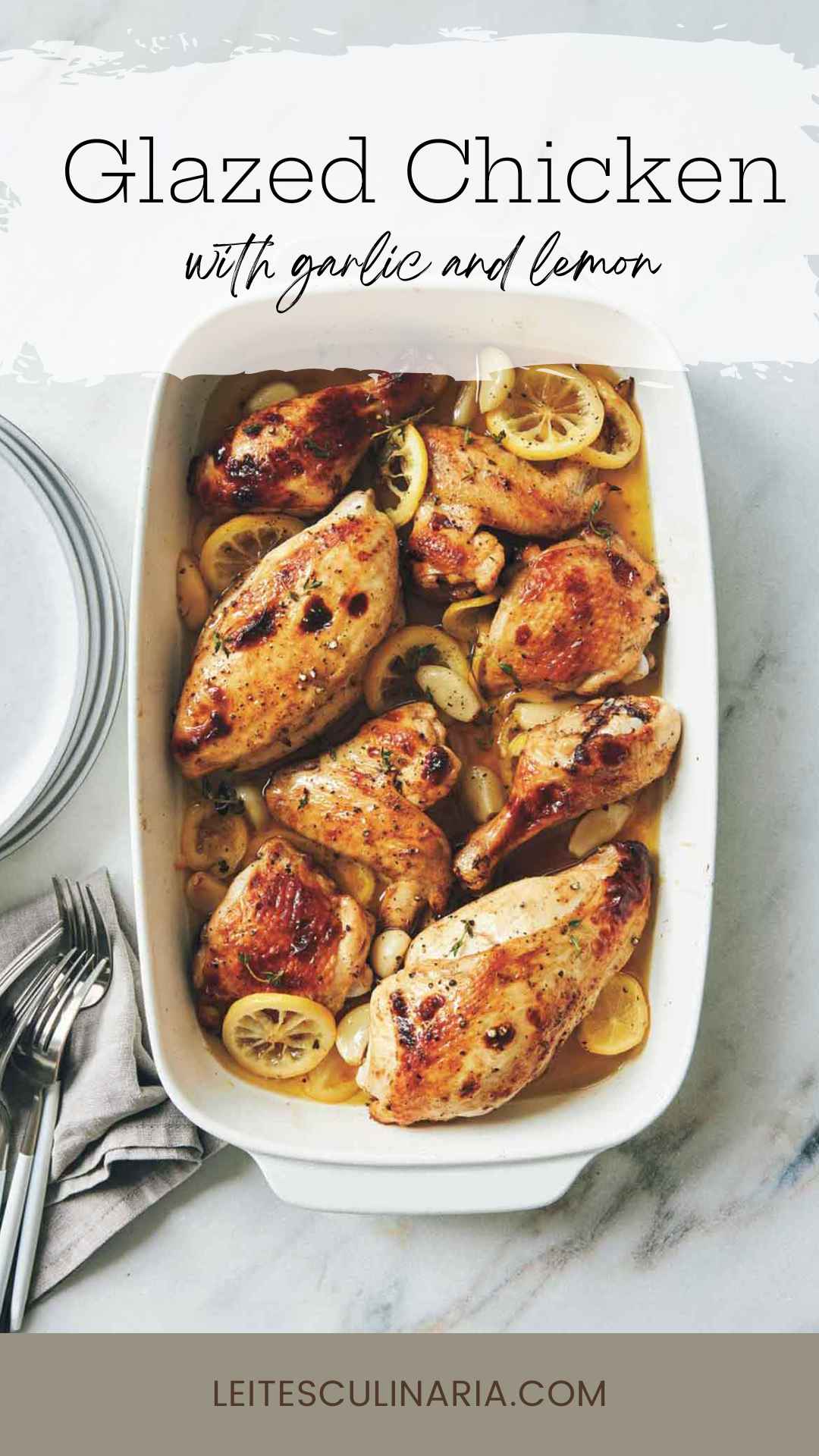






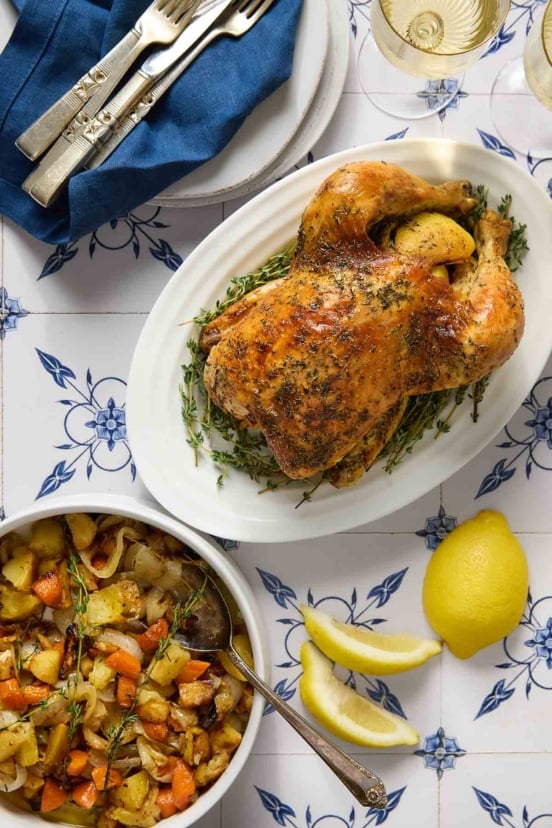
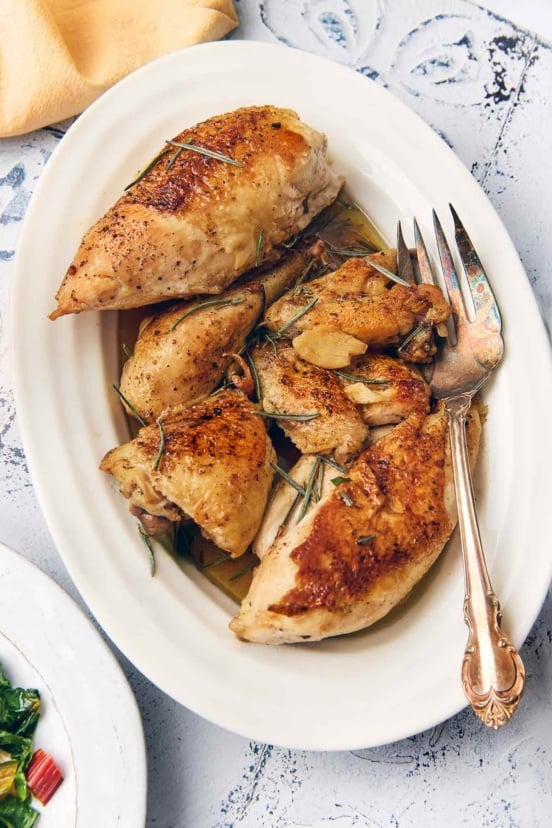









I made this a bit more Middle-Eastern with the addition of preserved lemon, cut up dates, and capers. It was delicious. Even my daughter, who doesn’t eat anything resembling the animal from which it came, had seconds. The one thing that wasn’t clear was what to do with the leftover honey-vinegar marinade after the chicken is put in the baking dish–does it go in, too, or should it be discarded? Also, next time I’m going to double the garlic.
Thank you, Marlene! We’re so pleased to hear that you all enjoyed it so much. Regarding the honey and vinegar mixture, you want to get as much as possible on the chicken. If you’ve got a bit leftover, you definitely could drizzle it over the top of the chicken before spooning the garlic mixture on top.
Just a reminder, whenever you use aluminum foil to cover acid food remember to first cover the tray with parchment paper, then aluminum foil, or else you risk finding out the foil touched the acid and dissolved on top of the food leaving green poisonous oxides on it. It happened to me – on Christmas Day?
Thanks, Kat. What a terrible experience!